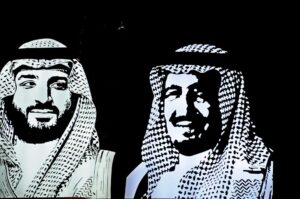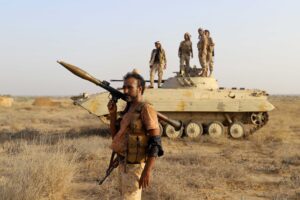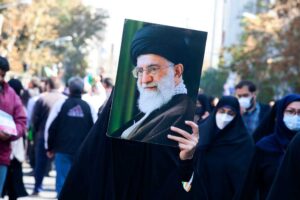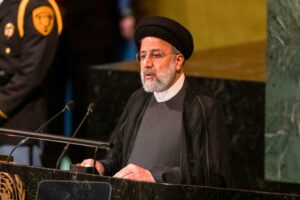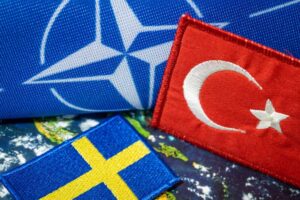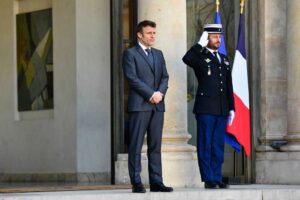Lebanon is a multiparty confessional republic on the shores of the Mediterranean which “never existed before in history. It is a product of the Franco-British colonial partition of the Middle East” (Traboulsi 2007: 75). Invented and expanded in pursuit of an independence from the rest of the Levant, with a special relationship to France as the beacon of its civilising mission to the ‘backward Arab world’, Lebanon was set up in the Levant under Christian Maronite domination and came to include over 17 religious sects in the first part of the twentieth century (Salibi 1989, Hakim 2013). With a history far too complex to be engaged here, the country has been through multiple civil wars to survive through a delicate power balance between its three main religious constituencies (Christian Maronites, Sunni Muslims, and Shia Muslims) as it navigates multiple lines of global division. Under a weak state with a project of westernisation and neo-liberalism, it is certainly not a homogenous place but is rather a space where multiple (religious) groups (co)-exist in parallel, each with distinct founding myths and imagined horizons.
The Levantine land, whose population is around four million citizens, is host to over one million Syrians, over half a million Palestinians and large numbers of Iraqi, Bangladeshi, and African and Asian migrants. These various groups, which have made it into the country for reasons as varied as armed conflict and economic migration over the past decades, find themselves systematically subject to racism, xenophobia, exploitation, abuse, marginalization, and exclusion across the small country. Eventually, with entangling reasons structured by the nation’s very invention under French colonialism and ongoing imperialism, being a refugee or a migrant from the Global South in Lebanon is a massively dehumanizing experience.
In this respect, research has documented and conceptualised the lived experience of Syrians in Lebanon, for example, as one of a serious “plight” as they are systematically “subject to exploitation and abuse” across social spheres (Saab 2014:94; Usta et al. 2019; Karis and Aranki 2014), one long predating the Syrian war (Chalcraft 2009; Thorleifsson 2016). Increasingly sedimented as Lebanon’s internal ‘others’, being Syrian has in this sense been transformed into a “stigma” as Syrians try to “change their accent or other characteristics in order not to be specially indexed or subjected to violence” (Thorleifsson 2016: 1079). With this, the Lebanese state has recently taken legal measures to ban Syrians from working in all but a few of the “lowest” occupations at the same time that it has forced them to pay unbearable fees for the simplest of paperwork (Harb et al. 2019). In a similar vein, Palestinians have been argued to be living at the intersection of multiple subjugating wounds as they have been cloistered in refugee camps where a state of exception rules (Hanafi and Long 2010; Hanafi 2008). In this respect, despite their protracted dwelling in the country, they are excluded from any and all forms of organisation, of media presence and expression, as well as of public visibility. Other groups, such as Iraqis and Sri Lankans, find themselves in similar positions (Moukarbel 2007; Trad and Frangieh 2007). Throughout, from common “jokes” to common “wisdom”, a social structure of racist exclusion appears to hold firm with the support of a structurally racist order.
In parallel to this racist order, the past years have seen Lebanon’s economic situation systematically deteriorating under the watchful eyes of global neoliberal institutions such as the World Bank and the IMF. From its currency devaluing to inflation, unemployment and public debt (currently the third highest in the world), this economic collapse is the product of entwining international, regional and internal factors. In this experience, refugees have been scapegoated and anti-refugee discourses and measures have increasingly blamed Syrians and Palestinians, in particular, for being an economic burden that has brought the country’s resources, infrastructure and economy to its knees.
Indeed, in shifting the blame away from neo-liberal policies and the corruption of the oligarchic elite, Lebanon’s political leaders have advanced a ‘Lebanese first’ agenda mobilising various media channels and public discoursers subjugating refugees as they claim to push for the average citizen’s economic betterment. Key in this has been right-wing political parties, organisations and figures, such as the country’s interior minister and head of the Free Patriotic Movement Gebran Bassil who has explicitly positioned himself as a racist nationalist advocating for municipalities to prohibit Syrians from entering their jurisdiction and legally barring businesses from hiring refugees, for example. Yet, despite the mass spread of the refugee scapegoat and the ensuing exclusions, Lebanon’s economic situation has systematically deteriorated as the entire nation has increasingly felt the burden of economic collapse.
The October Emergence
On October 17, 2019, an unexpected wave of mass demonstrations was triggered by a Lebanese Internal Ministry decision imposing a tax on WhatsApp calls to generate revenues for an increasingly impotent state. Given mass socio-economic grievances, these demonstrations quickly turned into a cross-sectarian leaderless revolution protesting and seeking the overturning of the Lebanese socio-economic order.
With this mobilisation, chants of “Refugees are welcome here!” have casually echoed in the streets of Beirut. These have been, in turn, accompanied by previously unheard-of refugee participation alongside Lebanese citizens in protests, ensuing celebrations of this participation, and acts of collective solidarity. In parallel, demonstrations and marches by various migrant groups have received media attention while being supported by Lebanese citizens. Throughout, there is an emerging mass insistence on refusing the xenophobic order enforced by the ruling elite, voiced through modes as varied as slogans, graffiti, and marches, producing one of the Lebanese October Uprising’s most distinguishing and unexpected feats: an explicit discourse of inclusion, anti-racism and anti-xenophobia in Lebanon.
This emergence is particularly relevant for two main reasons. The first is that much racism against refugees builds on a potent narrative of refugee culpability for the country’s economic ailments, particularly in attacking Syrian refugees who have entered Lebanon since 2011. As the protest was itself a result of a deteriorating economy, one might expect this racism’s perpetuation, yet that did not happen. The second reason is that the protests were invigorated by a rare manifestation of what might be termed a collective national ‘Lebanese identity’ beyond sectarian and political divides. With the often-unavoidable entwinement of nationalism and racism, one would also expect a racist unfolding. There wasn’t one.
Complex and multifaceted, this unfolding offers insights into anti-racist social movements that may be of use within and beyond the small Levantine land. For this reason, the following paragraphs will attempt to identify some key influences of this emergence in pushing for a anti-racist research agenda.
In identifying the structuring of this anti-racist ethos, one can begin by centring the development of a powerful mass consciousness with a clear identification of the enemy: the country’s oligarchic ruling elite. With this identification, a clear centre of power was recognised: neo-liberal capitalism and its agents. Accordingly, the emerging movement explicitly and systematically directed itself against this socio-economic order. While the factors leading to the emergence of this consciousness are complex, it is not difficult to suggest that they have been largely driven by this elite’s systematic and successive economic and political failures in close cooperation with global neoliberal institutions. From the failure of successive international aid conferences held over the past decades in bringing relief to the disillusionment with Lebanon’s post-war reconstruction project expected to ‘trickle down’ to Lebanon’s middle and lower classes. In this respect, the average Lebanese seems to have increasingly come to recognise the complicity of a corrupt elite with global capitalism.
The country’s governing class’ flagrantly provocative actions against various sections of Lebanon’s dwellers and its exclusive, identitarian, and class distance from the mass population can be advanced as complementing variables. Accordingly, the movement’s deep sense and need to distance itself from the ruling elite, and the ruling’s elite’s overtly racist agenda, seem to have intersected to espouse an anti-racist position. Bassil, for example, was a key target of the protests, with multiple dedicated chants emerging to reject his person and his politics. These, as is common knowledge in the country, included an anti-refugee politics. In this sense, as the movement worked to negate, to define itself as essentially an antithesis, an anti-xenophobia sentiment was strongly embraced. With the lack of a clear leadership, this quickly spread as the movement came to be defined as the old political model’s antithesis: its neo-liberal failure and its racist scapegoating were merged for the masses.
In building towards this, the work of a large number of academics and intellectuals who have participated in and pioneered the protest movement with information sessions, teach-outs and various critical conversations were key. Indeed, the presence of ‘public intellectuals’ from the movement’s earliest days can be said to be crucial in pushing for an inclusive and critical conversation setting the leaderless agenda’s ethos. With this, the presence, involvement and support of educational institutions in the mass mobilisation, from schools to universities, also sedimented the movement’s engagement with knowledge and criticality.
In line with this, the strong presence of students and youths – for whom the baggage of Lebanon’s civil war and the entangled anti-Palestinian and anti-Syrian hostility is not as present – at the forefront of the demonstrations proved vital. Coupled with the academic and intellectual presence, an emerging consciousness seems to have developed among protestors where the capitalist ruling elite and its corruption were increasingly recognized as the complete culprit as the refugee scapegoat gradually collapsed.
In parallel, and as the economic condition of the Lebanese population continues to deteriorate, empathy with the lived experience of refugees and migrants also seems to have developed, especially among the middle classes who now find themselves faced with burdens that (relatively) parallel those of non-citizen fellows. From the increase in the cost of basic services to the inability to provide health and education, many Lebanese citizens have begun to find themselves sharing a subjugation with migrants and refugees as the two groups emerged as similarly disadvantaged allies with shared interests. Hence, chants declaring that fighting against the corrupt system was all Lebanese resident’s rights, not that of legal citizens only, echoed in the marches and protests.
Eventually, through the intersection of multiple variables, the Lebanese October uprising seems to have managed a feat the majority of other social movements evolving out of modernity’s crisis over the past years have possibly failed to do: it has set itself an anti-racist agenda as it sought to combat neo-liberal capitalism. To realise the value of this, one can look at the Occupy Wall Street movement in the US and the gillets jaunes (yellow vests movement) in France, for example. Both movements can be said to have sought a class struggle for their respective populations identifying the culprit as capital, and only capital, rather than modernity’s racialised capital. In this respect, they have failed to deliver, especially (but not only) for their communities’, and the world’s, racialised. By defining itself as a complete negation, the Lebanese leaderless movement did not fall into this fallacy as the protestors pursued a dismantlement of the racial-capital complex.
Despite the bleakness of Lebanon’s current reality, the development of an anti-racist ethos in the Lebanon October Uprising offers plenty in the pursuit of anti-racist politics within the country but also across geographies and stands as a key feat of a popular will to combat for justice. Consequently, in the case of the US and the UK today, for example, much stands to be learnt given the significant similarities between the two situations: from the neo-liberal oligarchic ruling order and the right-wing political elite to expanding inequalities and unabated social hierarchies and racisms. In a time of rising right-wing nationalism, a rise which many white elements of the left appear incapable of adequately resisting, this is particularly relevant and research into this emergence, and the lessons to be learnt from it, are evidenced as particularly important.





